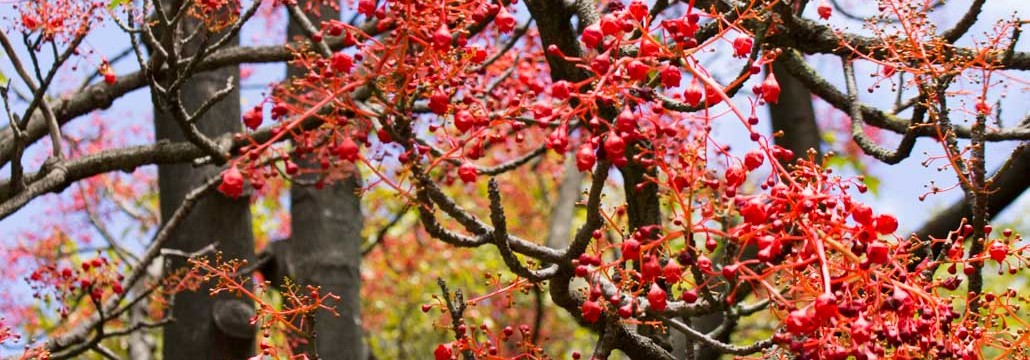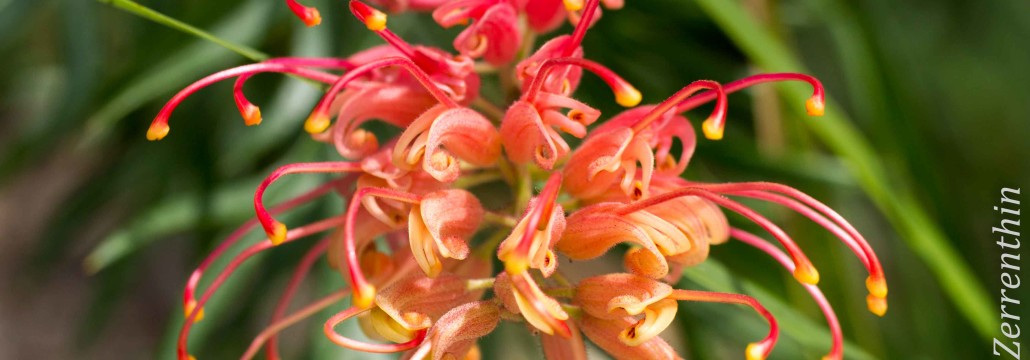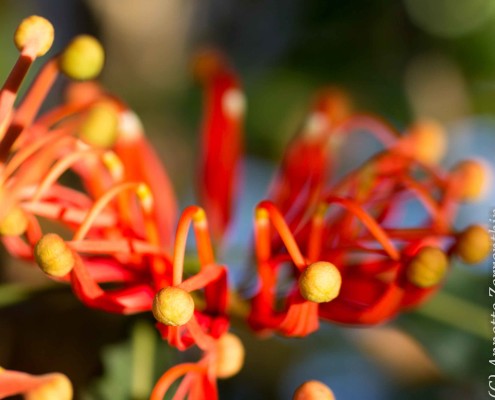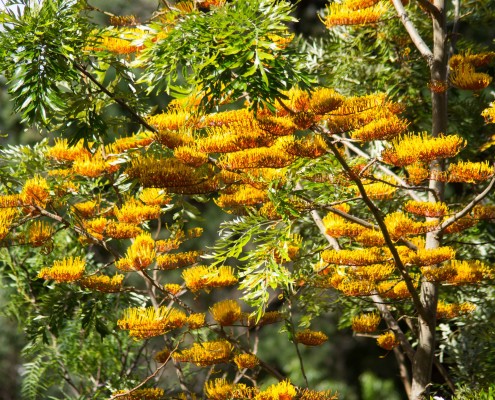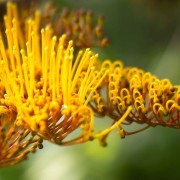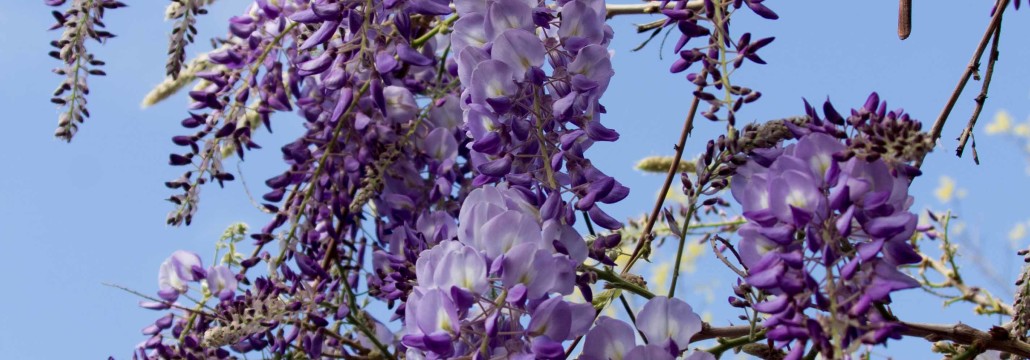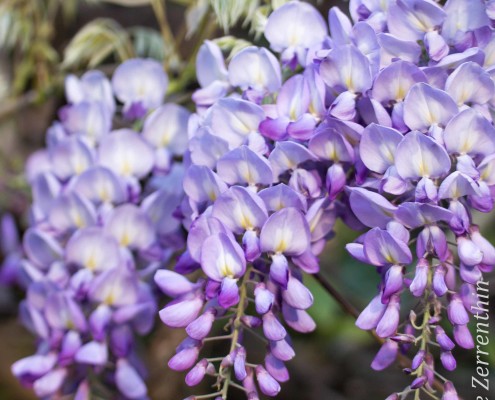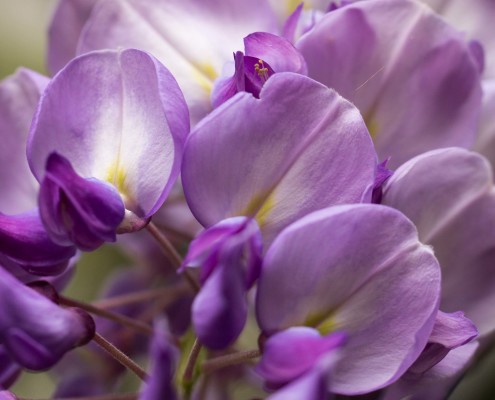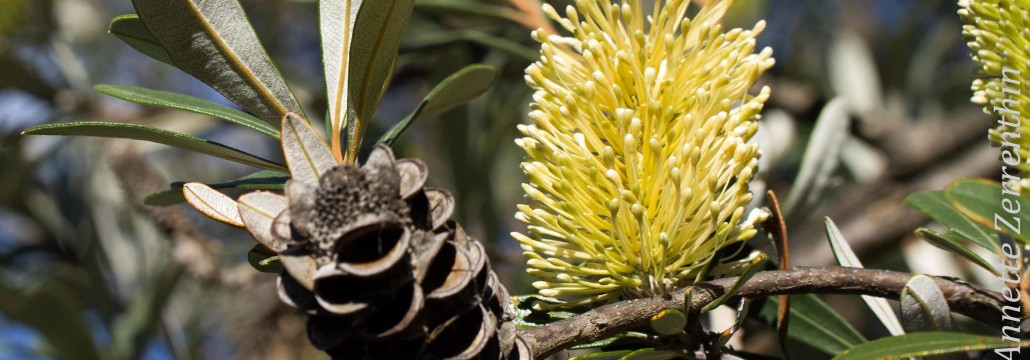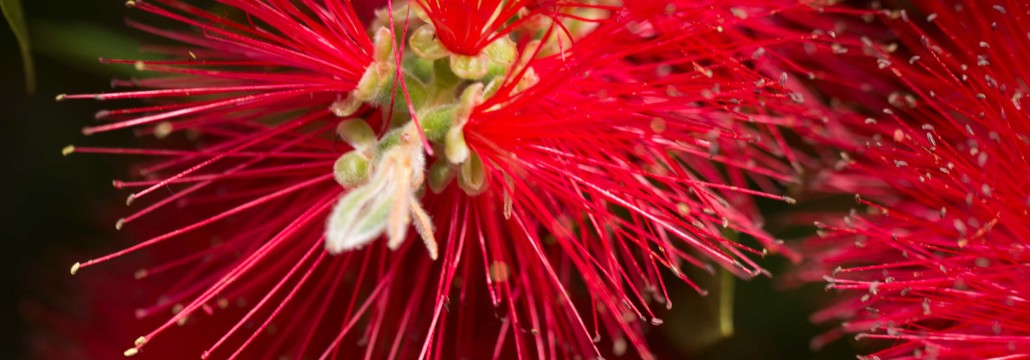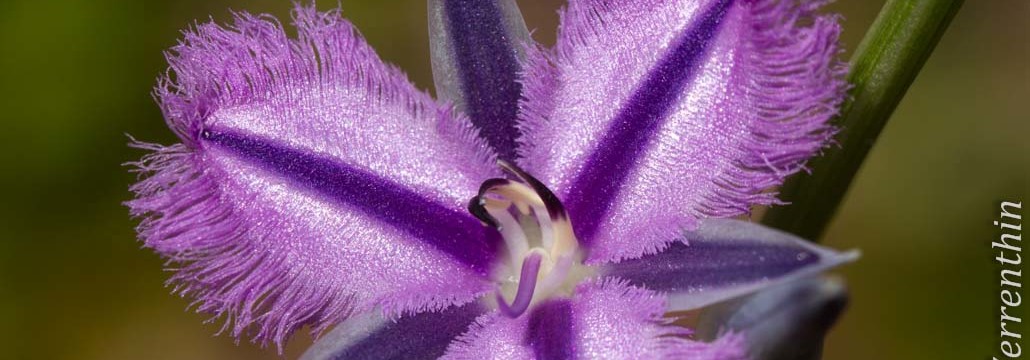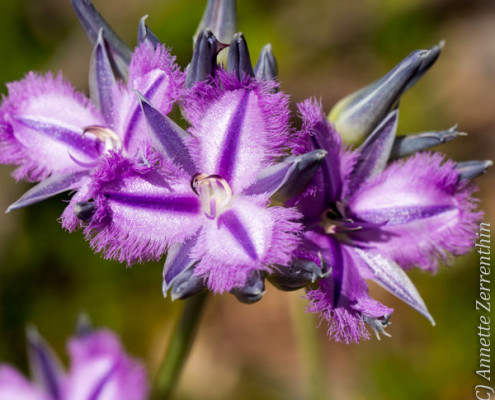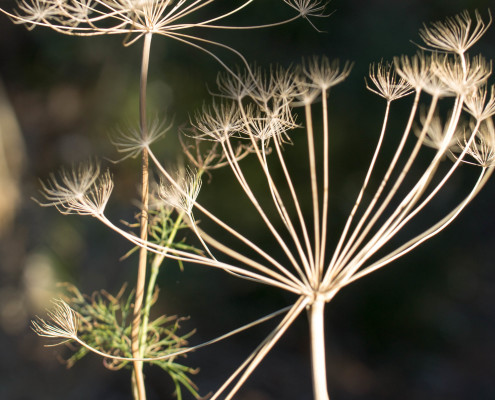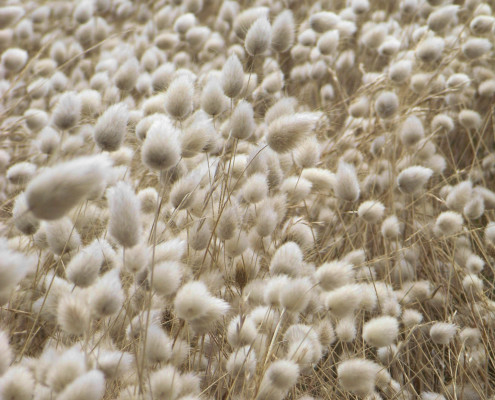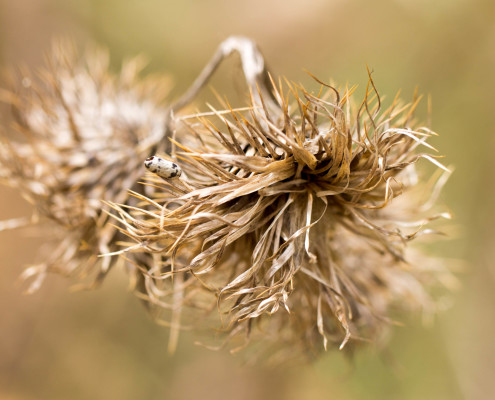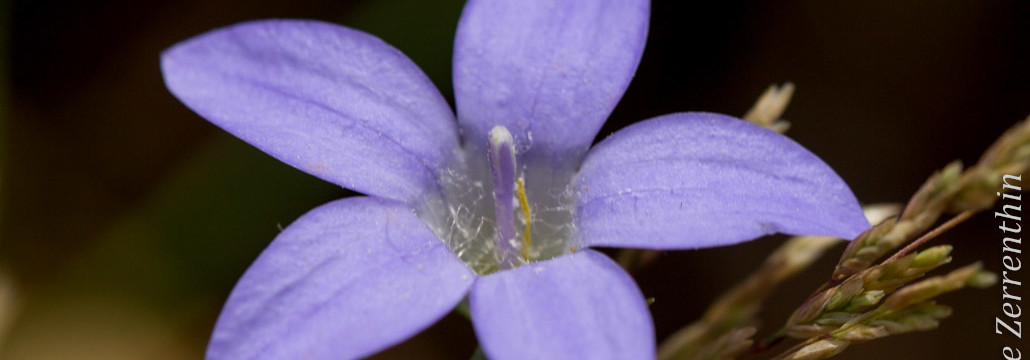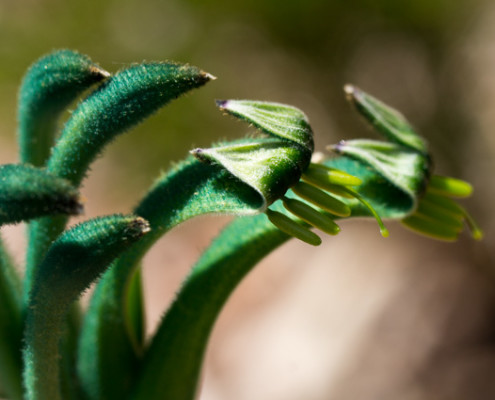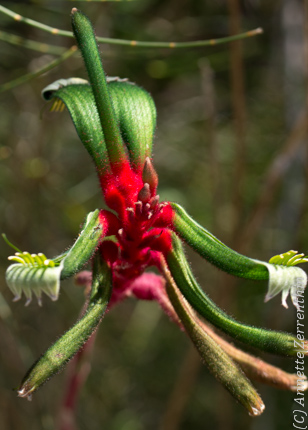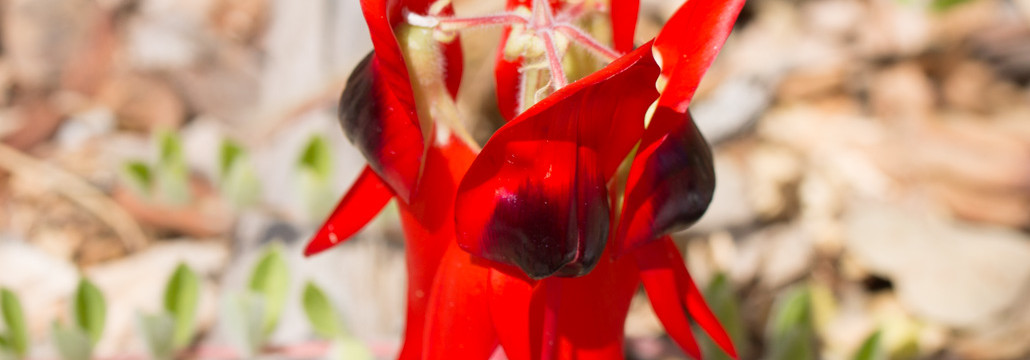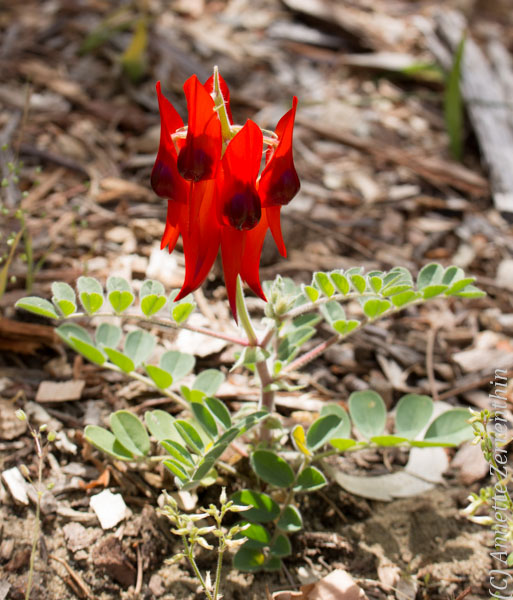Chasing Illawarra Flame Tree
I have been chasing the flowering of Illawarra Flame Tree for months. In late Winter, I went with my camera to the St Kilda Botanic Gardens to photograph a red flowering tree but then realised that I was looking at the Coral Tree Erythrina. From my books I learned that the Flame Tree is in flower at the same time as Jacaranda in the Australian late Spring or early Summer. Well, the Jacaranda’s are in full violet bloom right now in Melbourne but the scarlet flowers of the Flame Tree’s I remember so well from last year are missing.
When calling the Melbourne Botanic Gardens this week they confirmed that the Flame Trees are not flowering this season as the weather had been unusually cold and wet in Melbourne. My Encyclopedia of Australian Native Plants confirms that flowering can be erratic from year to year as the plant prefers a dry, mild winter. Very much wanting to write about Illawarra Flame Tree I had to dig into my photo archive to find a couple of photos I took quickly on the side the year before while I had concentrated on Jacaranda.
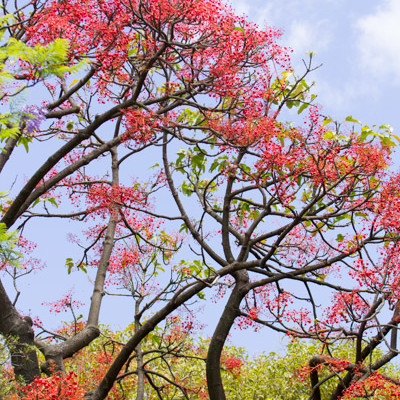 Illawarra Flame Tree Brachychiton acerifolius is native to Australia’s northern tropical and sub-tropical regions. It belongs to the Malvaceae family and Brachychiton is a genus of 30 species which are all native to Australia with the exception of one or two found in Papua New Guinea.
Illawarra Flame Tree Brachychiton acerifolius is native to Australia’s northern tropical and sub-tropical regions. It belongs to the Malvaceae family and Brachychiton is a genus of 30 species which are all native to Australia with the exception of one or two found in Papua New Guinea.
In Australia, the genus is also known under the name Kurrajong. Just before flowering in late Spring or early Summer the tree loses its leaves giving way for spectacular sprays of bright scarlet bell-shaped flowers.
The pod-shaped fruits of the Kurrajong are 10cm long, dark brown in colour, and contain bright yellow seeds. 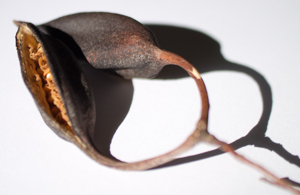 The seeds were eaten by Aboriginals raw or roasted after removal of their irritating yellow hairs. When roasted over high heat, the seeds develop a nutty flavour. They are highly nutritious, containing protein, fats, zinc and magnesium.
The seeds were eaten by Aboriginals raw or roasted after removal of their irritating yellow hairs. When roasted over high heat, the seeds develop a nutty flavour. They are highly nutritious, containing protein, fats, zinc and magnesium.
The healing properties of the flower essence are actually based on the hand-like shape of the young leaves, appearing to reach out in search of acceptance. Thus, Illawarra Flame Tree Brachychiton acerifolius essence from the Australian Bush Flower Essences range is the essence to support someone with an overwhelming sense of rejection.
I believe that the feeling of rejection it is quite a regular occurrence these days. Our impersonal computerised world tends to enhance situations of rejection when for example applying for jobs in a tight job market over months or years when perhaps or perhaps less significant our posts on Facebook remain unacknowledged and our pages not liked. There is the feeling of rejection when a lover walks out or being excluded from a conversation at work. Writers, actors and creative folk deal with it so frequently that they share their stories on the official website ‘Literary Rejections’.
Psychologically, rejection destabilises our need to belong and undermines our self-esteem. When it occurs repeatedly it breaks us down. Seen from a higher perspective it can be our greatest teacher in learning to embrace and strengthen our uniqueness in the expression of self.
“Dearer are those who reject us as unworthy, for they add another life; they build a heaven before us whereof we had not dreamed, and thereby supply to us new powers out of the recesses of the spirit, and urge us to new and unattempted performances.” Ralph Waldo Emerson
 Illawarra Flame Tree essence is for those people with an ingrained pattern of feeling deeply hurt when perceiving rejection, be it real or imaginary.
Illawarra Flame Tree essence is for those people with an ingrained pattern of feeling deeply hurt when perceiving rejection, be it real or imaginary.
This pattern might play out with a tendency to join activities that are not liked in order to be part of a group and avoid being left out. Ian White of the Australian Bush Flower Essences writes on the consequences of such behaviour to the physical body: ‘Such actions are a deep denial of self and lead to a weakening of the thymus gland, the key to the immune system. Flame Tree essence strengthens and balances the thymus.’
There is an additional aspect to people who have this pattern of rejection in so far as they know that they have talents and abilities but feel overwhelmed by the responsibility of developing their potential. This perhaps due to the fear of showing their true selves and subsequently being possibly rejected.
Fear of responsibility is the second indication for this remedy, and can be used for example for people who continually delay parenthood due to being afraid of the responsibility it takes to have children.
The harmonising qualities of Illawarra Flame Tree essence are confidence, commitment, strength, self-reliance, and self-approval.
© 2013, Annette Zerrenthin
References Bryant, Geoff. The Random House Encyclopedia of Australian Native Plants. Random House, 2005. Low, Tim. Wild Food Plants of Australia. Angus&Robertson, 1991. Gardening Australia's Flora. ABC Books, 2013. White, Ian. Australian Bush Flower Essences. Bantam Books, 1991. White, Ian, Australian Bush Flower Remedies. Bush Biotherapies Pty Ltd, 2006.

